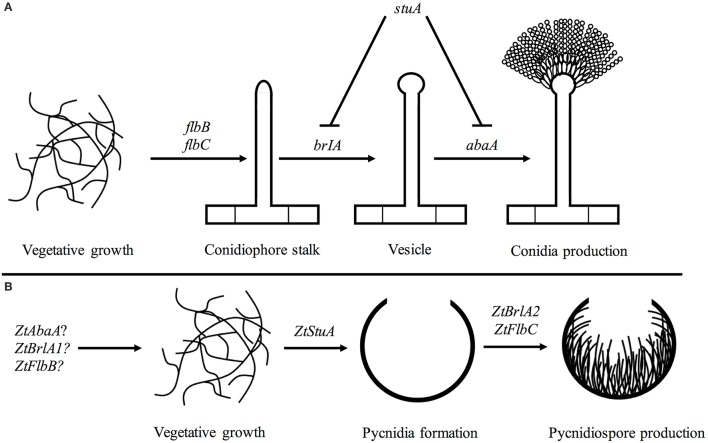Figure 10.
Pathways involved in asexual sporulation in A. nidulans, compared to the pathway proposed for Z. tritici; (A) in A. nidulans, asexual sporulation is controlled by the key regulatory genes including brlA and abaA. These are required for formation of the conidiophore stalk, vesicle and conidia. The stuA gene is required for spatial patterning of the conidiophore. The flbB and flbC genes are required for activation of asexual sporulation (reviewed in Adams et al., 1998); (B) in Z. tritici the ZtStuA gene may encode a key positive regulator of pycnidia production, with ZtFlbC and ZtBrlA2 acting downstream to induce pycnidiospore formation. Disruption of ZtAbaA, ZtBrlA1, and ZtFlbB had no impact on pathogenicity or asexual sporulation in Z. tritici, highlighting differences in regulation of sporulation between A. nidulans and Z. tritici, however these genes may be involved in other Z. tritici processes such as sexual sporulation.

